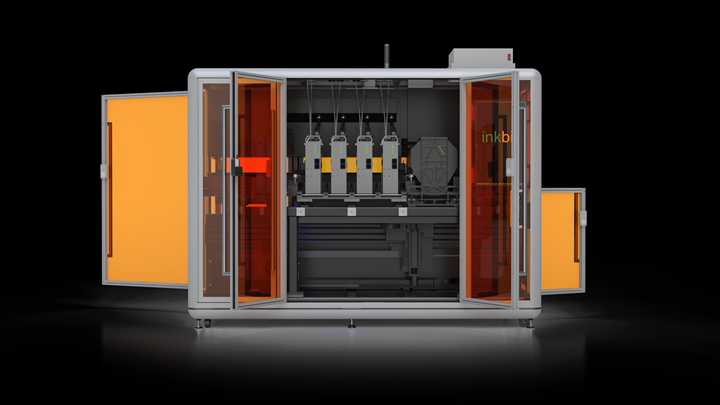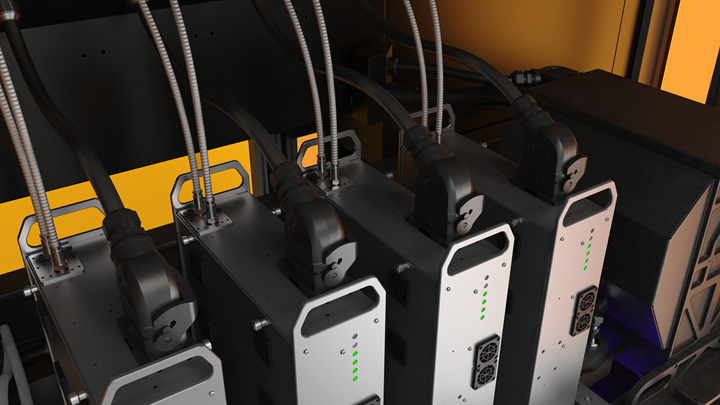Additive Manufacturing System Reportedly Revolutionizes 3D Printing
The Inkbit Additive Manufacturing system is said to feature first-of-its-kind closed-loop feedback control, multi-material printing capabilities, and exceptionally-low cost-per-part for final part.
What is reportedly a “first-of-its-kind” closed-loop feedback 3D printing ecosystem that revolutionizes traditional design and manufacturing methods with a platform based on scalable inkjet deposition and 3D machine vision, has been launched by Inkbit, Medford, Mass. The company that built the first 3D printer driven by vision-based feedback control is the 2017 spinout of the Computer Science and Artificial Intelligence Laboratory (CSAIL) at MIT.

The newly available Inkbit Additive Manufacturing System, featuring the proprietary Vision-Controlled Jetting (VCJ) solution and multi-material design software, is said to enable manufacturers to bridge the gap between prototyping and full-scale production, and at exceptionally low-cost-per-part for final part.
The VCJ technology, developed at MIT and protected by a strong IP portfolio exclusively licensed to Inkbit, reportedly takes additive manufacturing to production by enabling real-time, in-process voxel-level control to meet the reliability and performance demands of volume manufacturing. This technology converges advanced computational techniques with a scalable hardware architecture and materials chemistries which are said to be inaccessible to incumbents.
VCJ makes it possible to develop end-use products with high-performance polymers by:
▪ Optimizing in real-time for accurate and reliable prints. Inkbit’s proprietary vision system allows the system to capture voxel-by-voxel 3D scan data of the print process at high-speed, modifying each layer in real-time to ensure a perfect print.
▪ Simplifying and automating the full workflow. Vision-Controlled Jetting enables simple, fast, and non-hazardous post-processing of parts and reduces costs associated with lost materials, labor, and equipment. Inkbit’s technology can also integrate directly into existing manufacturing systems; with fully automated production, manufacturers can significantly reduce cost-per-part and more efficiently scale production.
▪ Combining resin 3D printing precision with production-grade materials to move beyond prototyping. Until now, the most precise 3D printing technologies have all required the use of certain undesirable materials which make parts brittle and weak over time. Inkbit’s technology allows these materials, called acrylates and methacrylates, to be completely removed, opening up a new field of high quality and long-lasting parts.

Said Inkbit’s co-founder and CEO Davide Marini, “We are thrilled to launch Inkbit’s Additive Manufacturing System and offer a unique, rapidly deployable 3D printing solution to companies looking to adopt digital manufacturing. Today, engineers are often using 3D printing technology to make prototypes, but limitations in materials and high costs make end-use product production difficult. At Inkbit, we’re on a mission to disrupt that notion and create a technology that provides fast printing capabilities with unmatched design freedom and reliability for even the most demanding applications and environments.”
Since 2017, Inkbit has raised $15 million in equity investments from world-class investors such as Stratasys, DSM Venturing, Ocado, 3M, IMA and Saint-Gobain. Inkbit also received significant funding from DARPA and NSF for the development of its core technology and applications in the medical field.
Related Content
-
Medical Manufacturer Innovates with Additive Manufacturing and Extrusion Technology Hubs
Spectrum Plastics Group offers customers two technology hubs — one for extrusion, the other for additive manufacturing — to help bring ground-breaking products to market faster.
-
Freeform Injection Molding Eases the Path to Medical Device Product Testing
A development and manufacturing service provider is using dissolvable molds to build injection molded silicone prototypes.
-
Large-Format “Cold” 3D Printing With Polypropylene and Polyethylene
Israeli startup Largix has developed a production solution that can 3D print PP and PE without melting them. Its first test? Custom tanks for chemical storage.











.png;maxWidth=300;quality=90)



